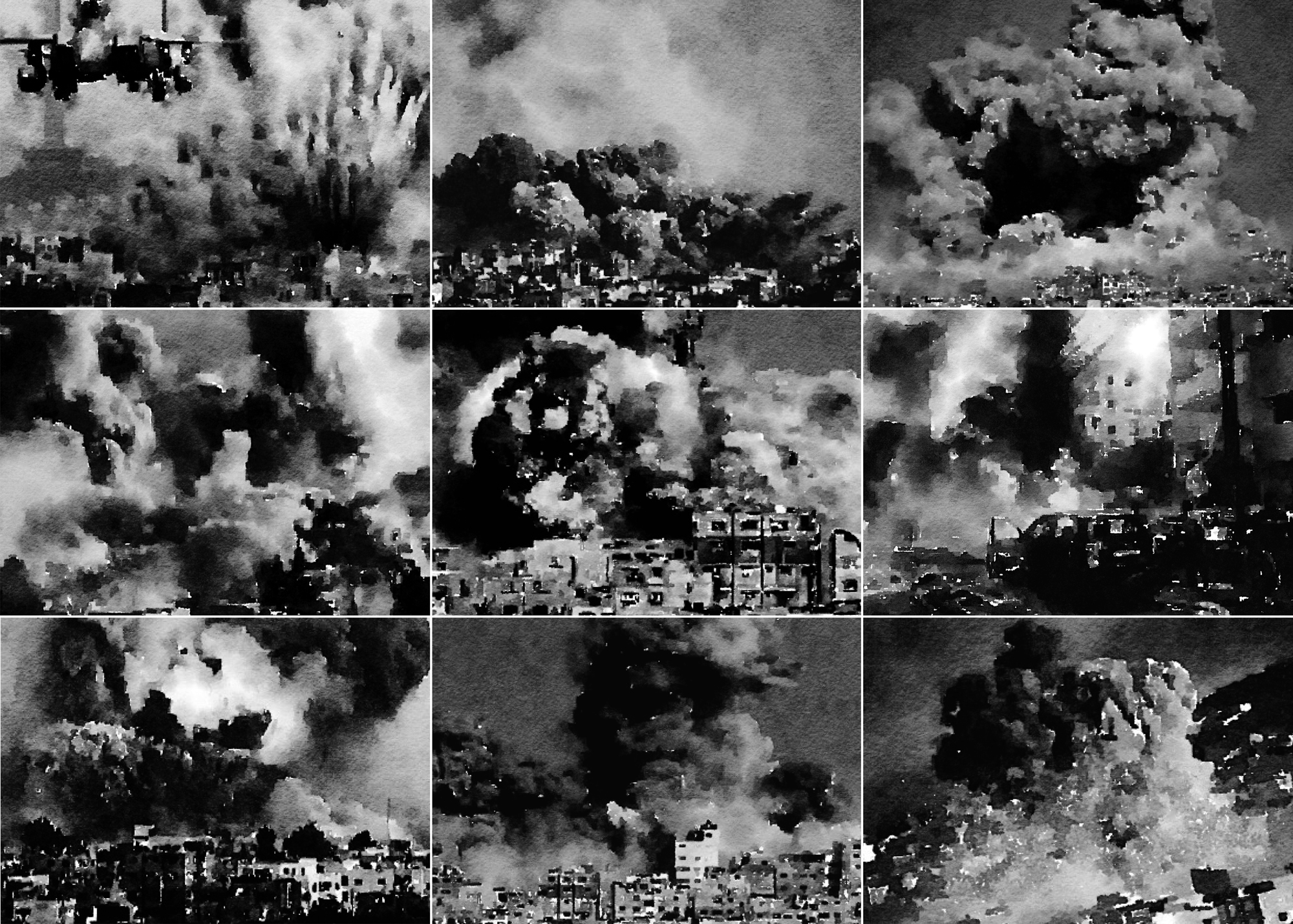
Aissa Deebi, This is How I Saw, Gaza,
Edition #3, 2019. Hybrid print, 50cm
x 70cm. Artwork commissioned and
printed by the Department of Painting
and Printmaking, at VCU School of the
Arts, Richmond, VA, USA. Courtesy of the artist.This art work reflects the theme of "Elusive Viewpoints"
|
Elusive Viewpoints
The classic panorama of the Old City of Jerusalem has been dominated by the
view of its Holy sites. Jawad Almalhi’s, Tower of Babel Re-visited offers an
alternative panorama of Jerusalem. The photograph allows us a vantage point to
view the refugee camp, settlements, Separation Wall and the unfinished Palace
of King Hussein. Almalhi searched for a vantage point to photograph the refugee
camp, impossible from within its confined passageways, and to capture the
encirclement of settlements. The panorama reveals the intensely accumulative
topographies of the built environment of refugees which have become a
testimony of dispossession.
From another viewpoint, Aissa Deebi in This is How I Saw, Gaza, explores the wars
on Gaza Strip, via re-representations of TV news screen- as Gaza is a place which he
is not permitted to enter. The series of prints offer a frightening and sombre grid of
terrifying violence. During her lifetime, Sophie Halaby (1906-1998) created tens of
drawings and watercolours of Jerusalem, Jericho and Palestinian landscapes from
different viewpoints. Halaby was one of few women artists of her generation who
studied arts in Italy and France between 1928-1933.1 In particular, she continually
and diligently studied the hills of Jerusalem, repeatedly sketching and painting
them. Uncannily, her landscapes have a melancholic and foreboding quality, which
perhaps reflect the transformations of the political eras she lived through.
Jack Persekian’s series Past Tense is a detailed study of Jerusalem through
archival photographs of the Matson Collection juxtaposed with presentday
documentation of the exact sites. The photographs reveal the detailed
transformation of the city, and a lost landscape, highlighting detailed changes of
each location.
|